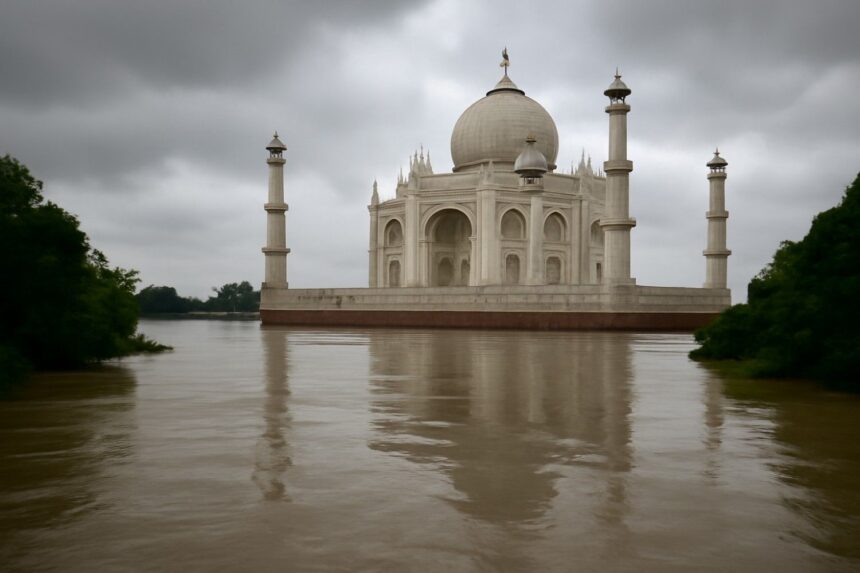A flood alert has been sounded in Agra as the Yamuna River’s water level surged dramatically, reaching the walls of the iconic Taj Mahal for the first time since 1978. The swollen river, fueled by recent torrential rains and upstream water releases, has raised concerns among heritage conservationists and local authorities about the structure’s safety and the potential impact on surrounding areas.
The Archaeological Survey of India (ASI) officials reassured that the Taj Mahal’s unique Mughal-era design includes flood-prevention features specifically intended to protect the main mausoleum and prevent water from entering the structure. Prince Vajpayee, a conservation assistant at the ASI, explained that the last time water reached the back wall was in 1978, during which the river flooded the monument’s basement rooms, leading to silt deposits. Since then, wooden doors that allowed water entry were removed, and protective walls were erected at vulnerable entrance points.

As the Yamuna’s water continues to rise, Agra district administration, along with the National Disaster Response Force (NDRF) and police, have heightened flood monitoring and rescue operations. Over 500 people from more than 50 villages and urban localities near the river have been evacuated to safer locations. The floodwaters have submerged over 500 bighas of agricultural land in Agra and neighboring Mathura district, disrupting power supplies and local livelihoods
Local authorities have urged residents to remain vigilant and adhere to safety protocols as they continue to assess risks and coordinate relief efforts. The situation remains precarious for low-lying areas close to the riverbanks, though ASI remains confident in the structural resilience of the Taj Mahal’s main edifice.
This surge in the Yamuna serves as a stark reminder of the environmental challenges historians, conservationists, and city planners face in preserving India’s cultural heritage amid changing climate patterns and increasing monsoon intensity.







